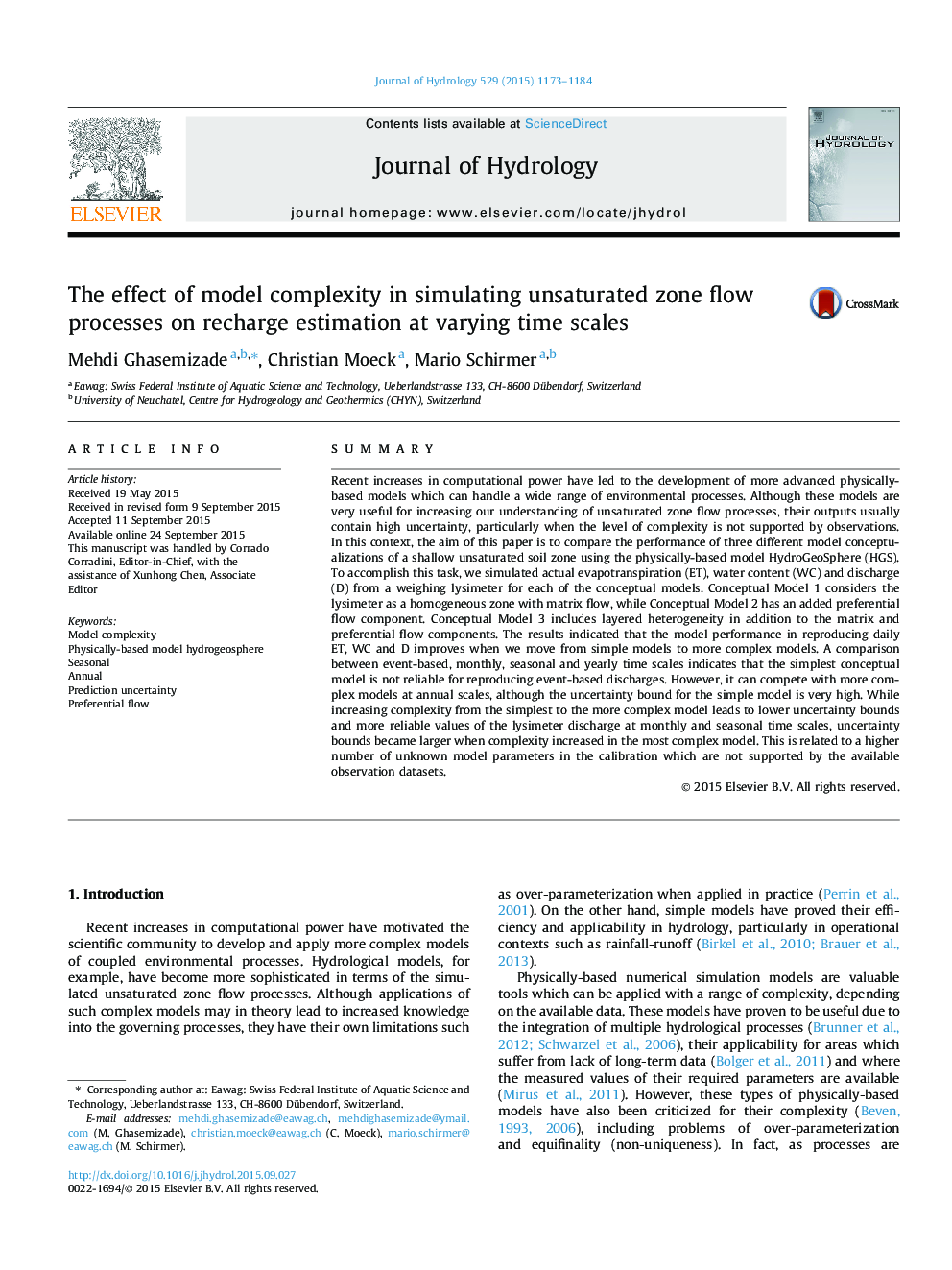| کد مقاله | کد نشریه | سال انتشار | مقاله انگلیسی | نسخه تمام متن |
|---|---|---|---|---|
| 6410747 | 1332885 | 2015 | 12 صفحه PDF | دانلود رایگان |
- We compared three conceptual models for simulating unsaturated zone flow processes.
- Model complexity effects on recharge rates at varying time scales were explored.
- Preferential flow is a required process for unsaturated zone modeling.
- Simple models can compete with more complex models on annual time scales.
SummaryRecent increases in computational power have led to the development of more advanced physically-based models which can handle a wide range of environmental processes. Although these models are very useful for increasing our understanding of unsaturated zone flow processes, their outputs usually contain high uncertainty, particularly when the level of complexity is not supported by observations. In this context, the aim of this paper is to compare the performance of three different model conceptualizations of a shallow unsaturated soil zone using the physically-based model HydroGeoSphere (HGS). To accomplish this task, we simulated actual evapotranspiration (ET), water content (WC) and discharge (D) from a weighing lysimeter for each of the conceptual models. Conceptual Model 1 considers the lysimeter as a homogeneous zone with matrix flow, while Conceptual Model 2 has an added preferential flow component. Conceptual Model 3 includes layered heterogeneity in addition to the matrix and preferential flow components. The results indicated that the model performance in reproducing daily ET, WC and D improves when we move from simple models to more complex models. A comparison between event-based, monthly, seasonal and yearly time scales indicates that the simplest conceptual model is not reliable for reproducing event-based discharges. However, it can compete with more complex models at annual scales, although the uncertainty bound for the simple model is very high. While increasing complexity from the simplest to the more complex model leads to lower uncertainty bounds and more reliable values of the lysimeter discharge at monthly and seasonal time scales, uncertainty bounds became larger when complexity increased in the most complex model. This is related to a higher number of unknown model parameters in the calibration which are not supported by the available observation datasets.
Journal: Journal of Hydrology - Volume 529, Part 3, October 2015, Pages 1173-1184
